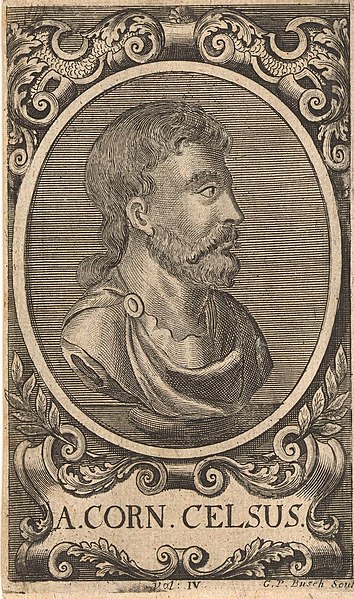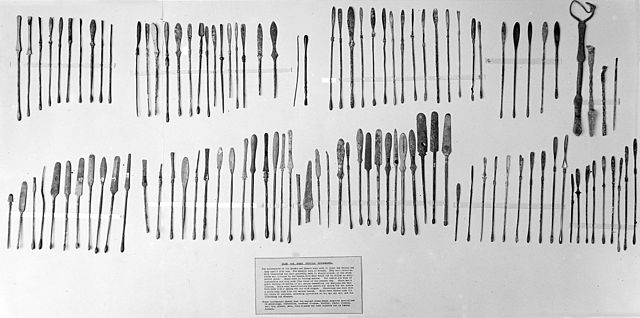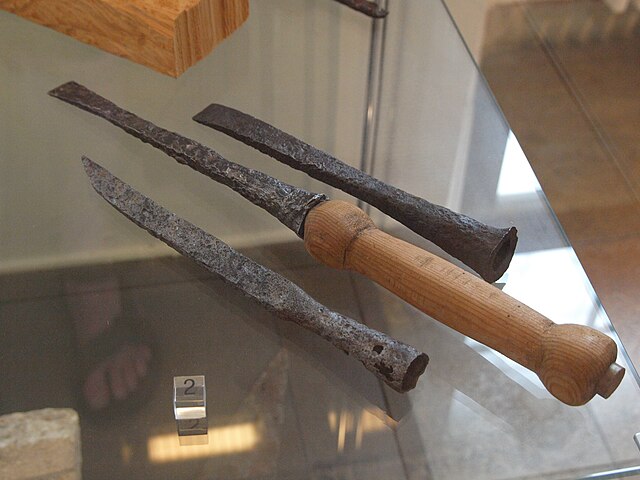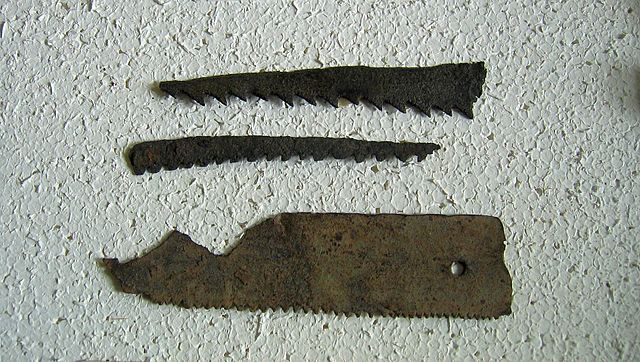Aulus Cornelius Celsus was a Roman encyclopaedist, known for his extant medical work, De Medicina, which is believed to be the only surviving section of a much larger encyclopedia. The De Medicina is a primary source on diet, pharmacy, surgery and related fields, and it is one of the best sources concerning medical knowledge in the Roman world. The lost portions of his encyclopedia likely included volumes on agriculture, law, rhetoric, and military arts. He made contributions to the classification of human skin disorders in dermatology, such as myrmecia, and his name is often found in medical terminology regarding the skin, e.g., kerion celsi and area celsi. He is also the namesake of Paracelsus, a great Swiss alchemist and physician prevalent in the Medical Renaissance.
Aulus Cornelius Celsus
De medicina
Ancient Roman surgical practices developed from Greek techniques. Roman surgeons and doctors usually learned through apprenticeships or studying. Ancient Roman doctors such as Galen and Celsus described Roman surgical techniques in their medical literature, such as De Medicina. These methods encompassed modern oral surgery, cosmetic surgery, sutures, ligatures, amputations, tonsillectomies, mastectomies, cataract surgeries, lithotomies, hernia repair, gynecology, neurosurgery, and others. Surgery was a rare practice, as it was dangerous and often had fatal results. To perform these procedures, they used tools such as specula, catheters, enemas, bone levers, osteotomes, phlebotomes, probes, curettes, bone drills, bone forceps, cupping vessels, knives, scalpels, scissors, and spathas.
Roman surgical tools from the Wellcome Collection
A Roman cupping vessel
Ancient Roman chisel
Ancient Roman sawblades






